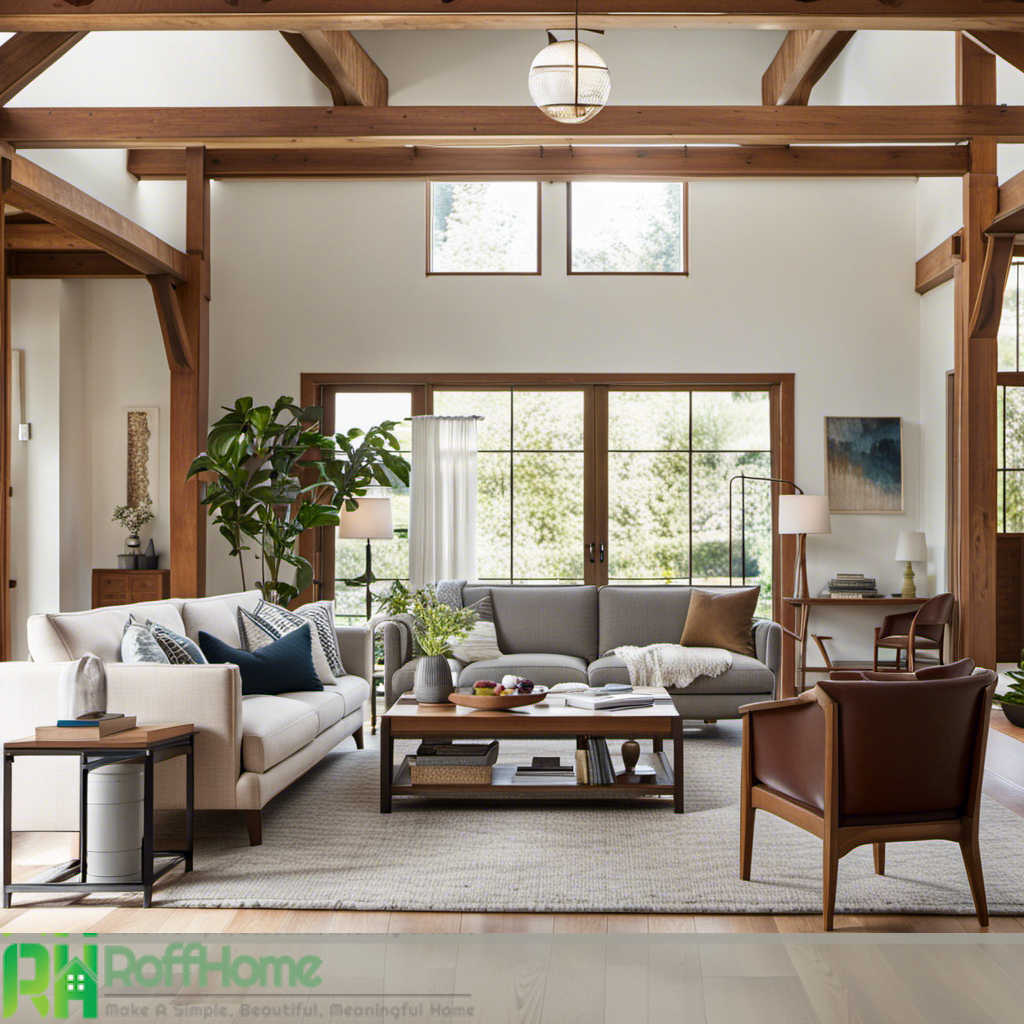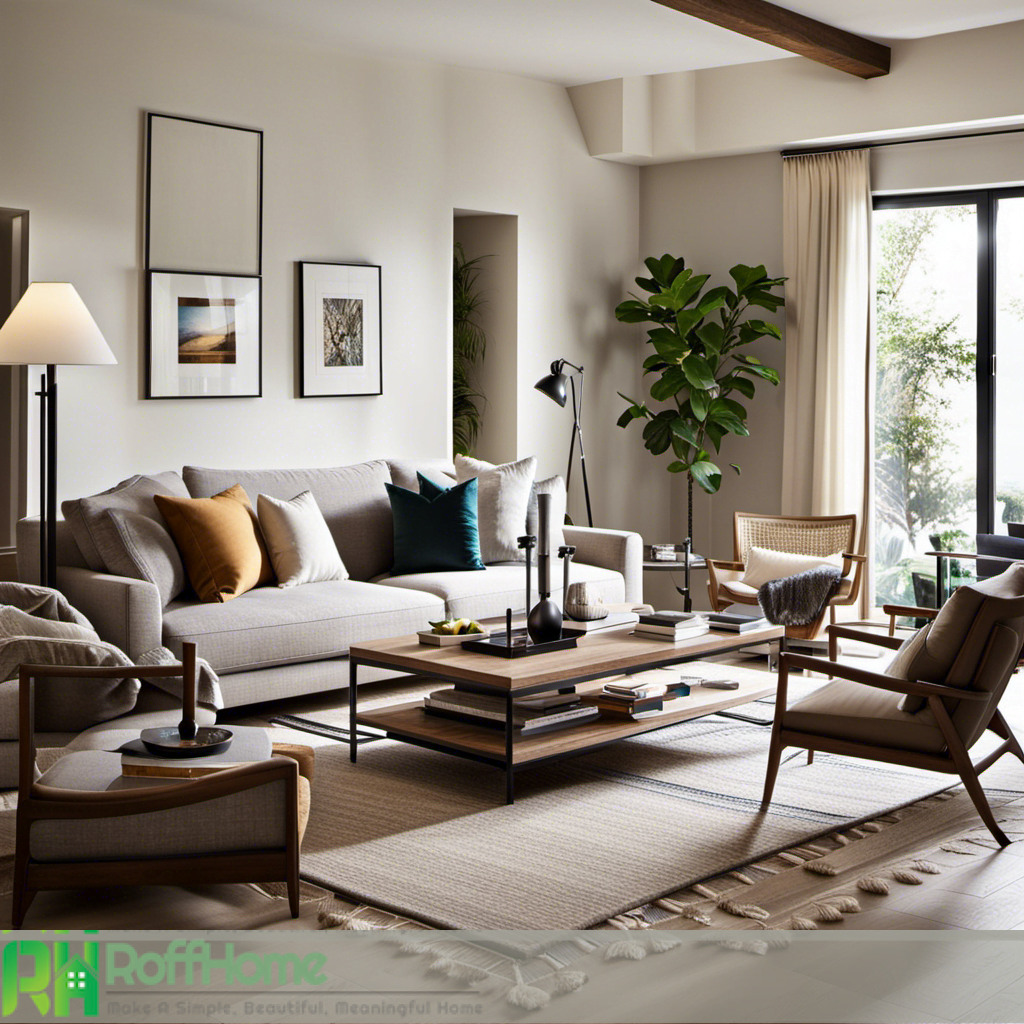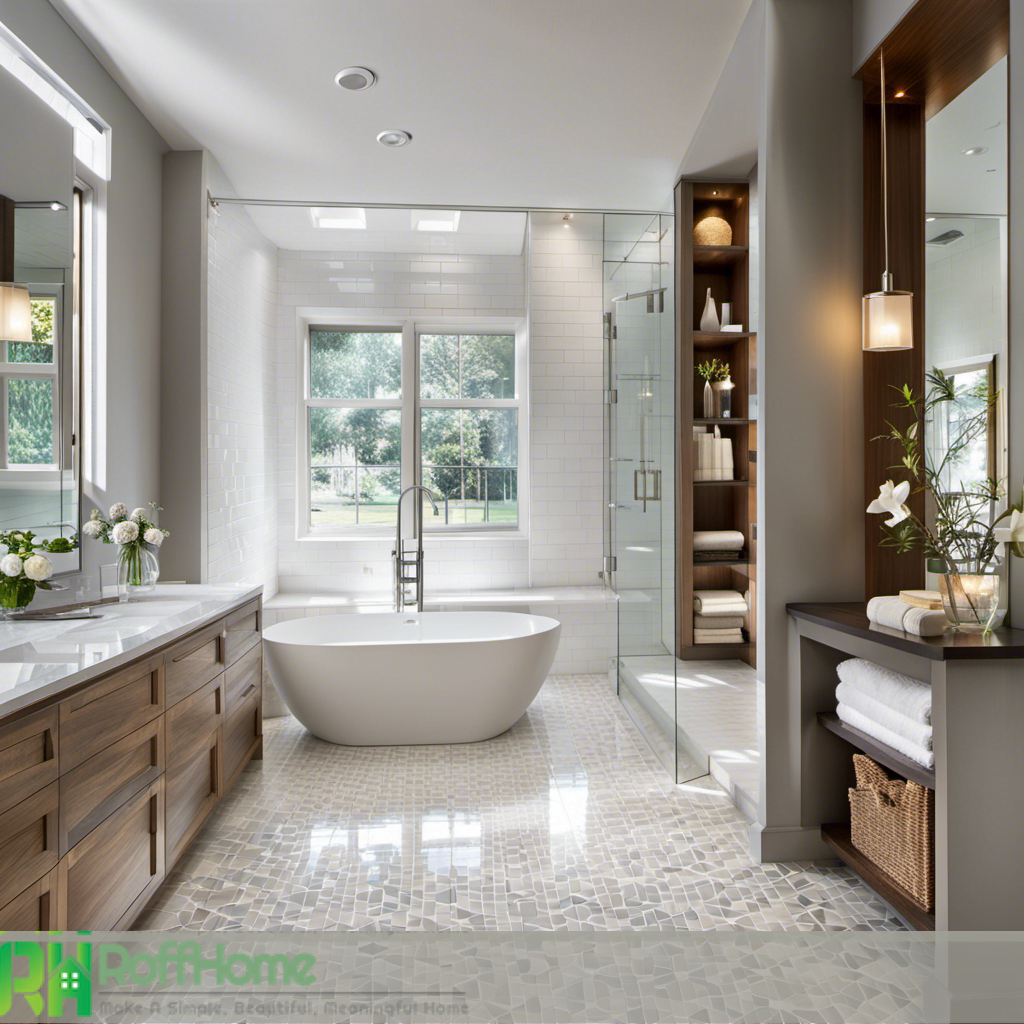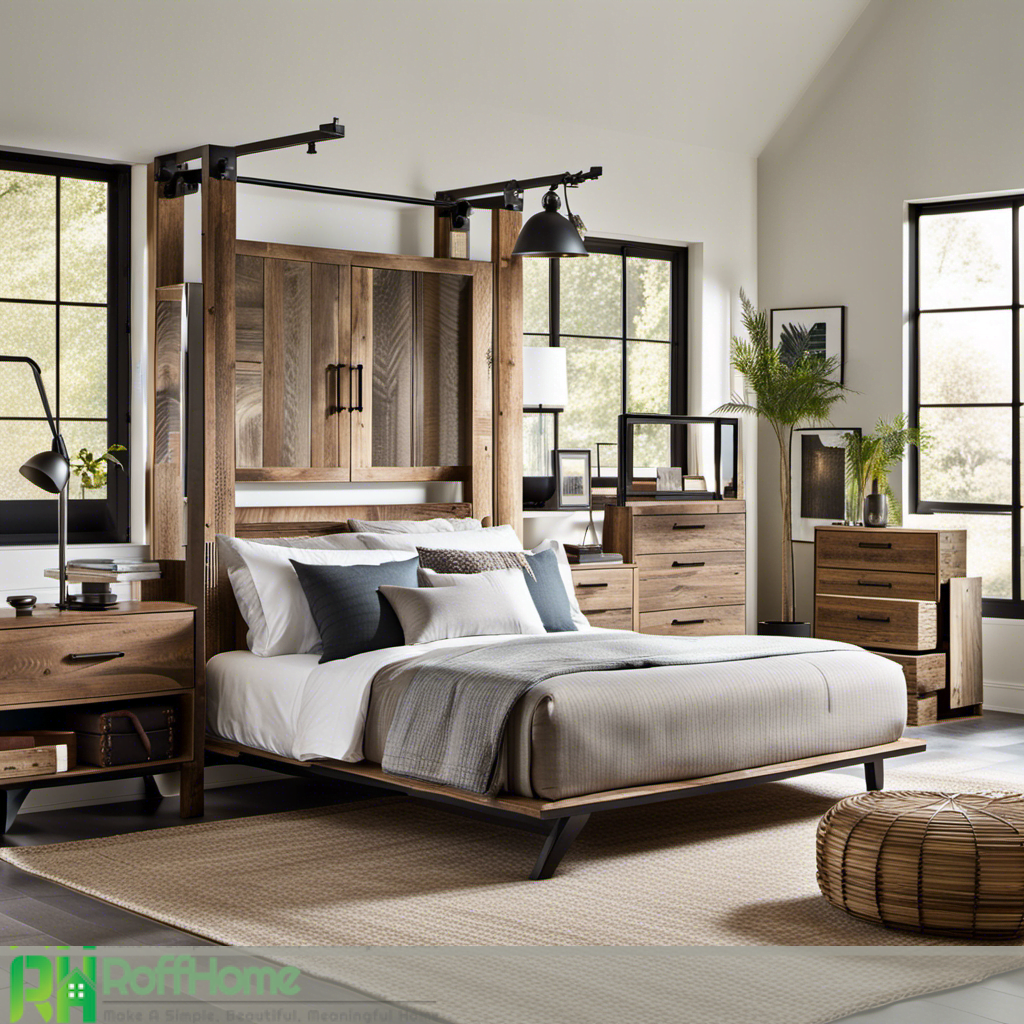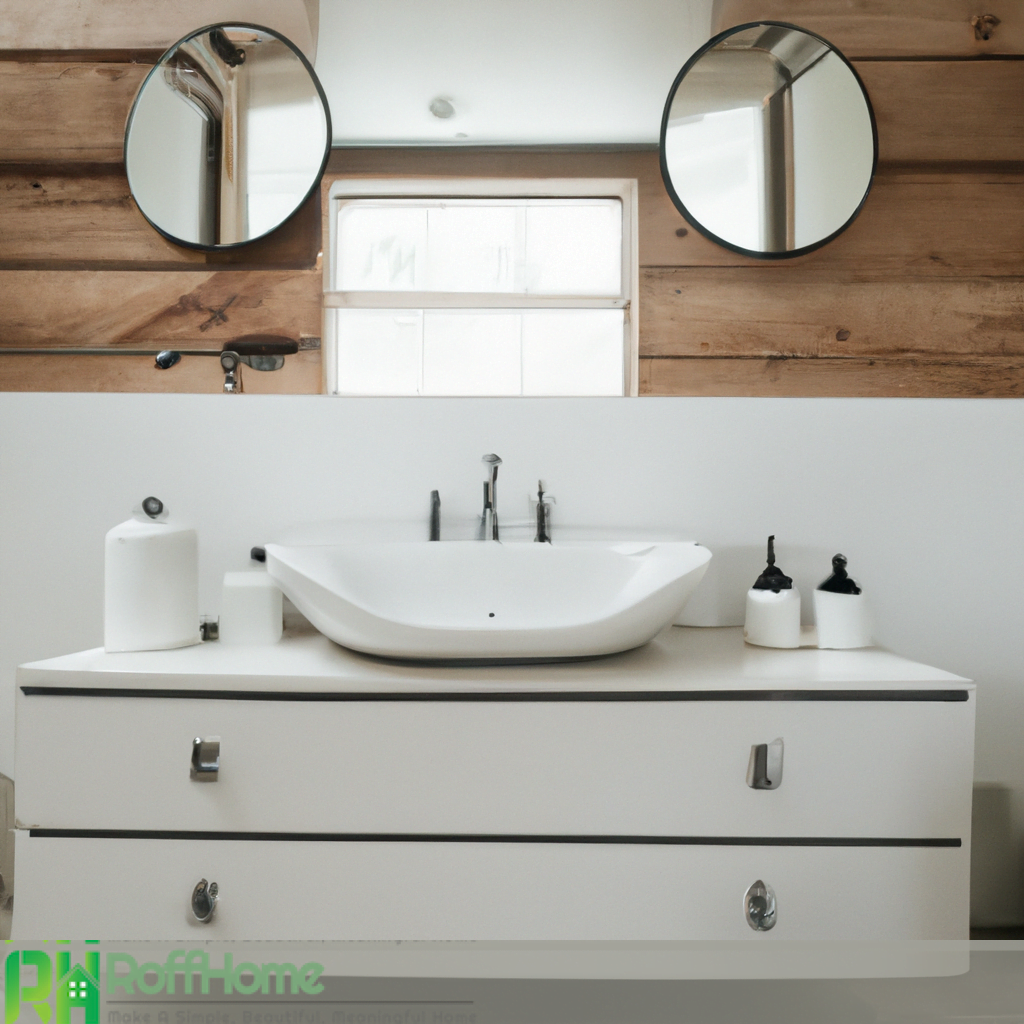Timeless Elegance: Slate Floor Bathroom Ideas for Luxurious Spaces
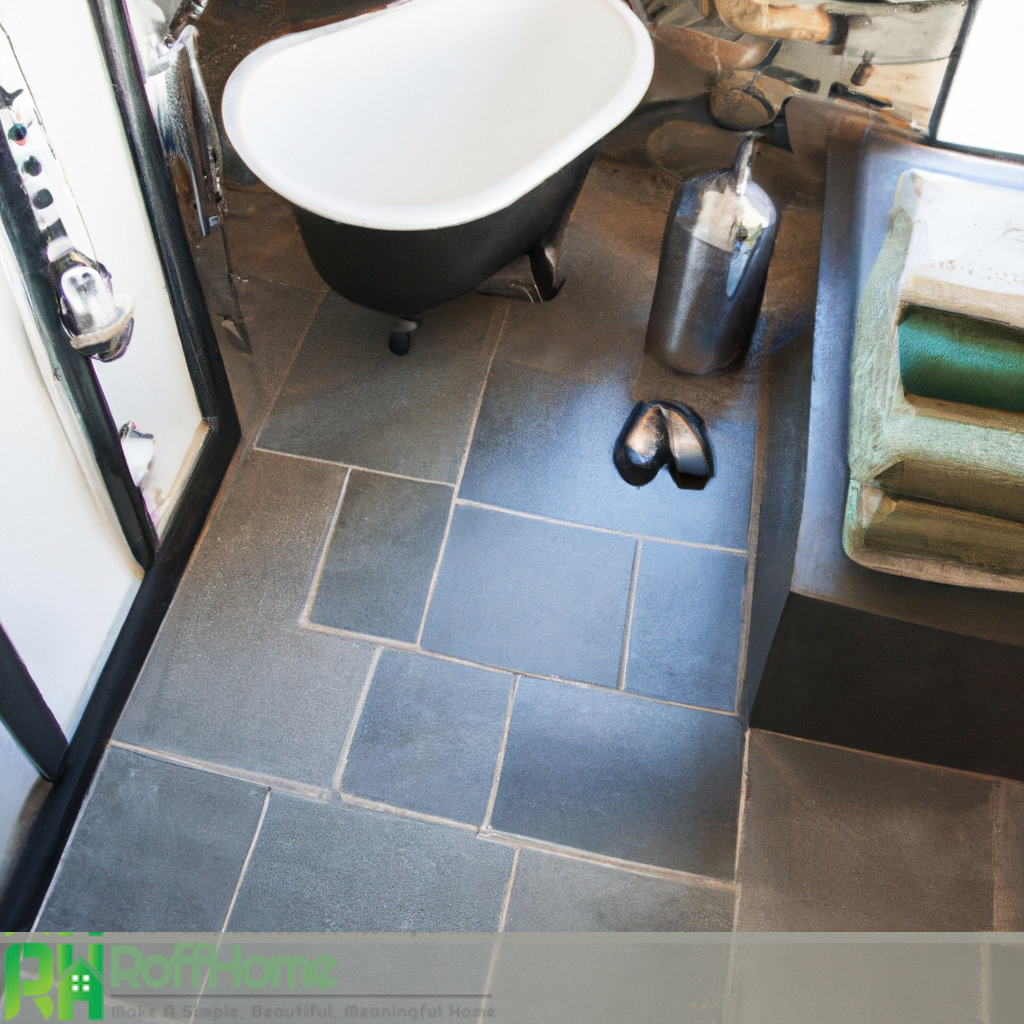
A slate floor bathroom offers a captivating blend of natural beauty and practicality. With its distinctive charm and versatility, slate has become a sought-after choice for bathroom flooring. As a natural stone, slate brings a unique character and elegance to any bathroom design. Its durable nature, water resistance, and low-maintenance qualities make it an ideal choice for this high-traffic and moisture-prone area. This article will explore various aspects of slate floor bathrooms, from tile installation to maintenance, and the design options available.
One of the critical advantages of slate flooring is its exceptional durability. This resilient natural stone can withstand heavy foot traffic and wear and tear over time. Additionally, its water-resistant properties make it particularly suitable for bathrooms where spills and splashes occur daily. Maintaining a slate floor bathroom is relatively easy, requiring simple cleaning routines to keep it looking pristine.
Regarding aesthetics, slate offers a wide range of patterns, designs, and color options to suit various styles and preferences. From earthy tones that add a rustic touch to contemporary designs that exude modern elegance, slate can complement any bathroom theme. Its timeless appeal ensures that your bathroom will maintain its stylish look for years. Whether you desire a spa-like oasis or a luxurious retreat, a slate floor can help create your desired ambiance.
Moreover, slate is an eco-friendly choice for those seeking sustainable materials. It is a natural resource that is abundant and long-lasting, reducing the need for frequent the replacements. Its slip-resistant and heat-resistant properties also provide safety and comfort, making it a practical choice for bathroom flooring.
Top Bathroom Color Schemes to Complement Slate Flooring: Design Inspirations
Designing a bathroom with slate flooring offers a unique opportunity to create a harmonious and visually stunning space. A suitable color scheme can enhance the natural beauty of the slate while complementing the overall bathroom design. In this article, we will explore some of the top bathroom color schemes that perfectly complement slate flooring, providing design inspiration to transform your bathroom into an inviting sanctuary.
Earthy Neutrals: Warm and earthy neutrals, such as sandy beige, soft taupe, or warm gray, harmonize seamlessly with the organic tones of slate. These colors create a soothing atmosphere, ideal for turning your bathroom into a tranquil retreat.
Ocean Blues: Pairing slate flooring with shades of ocean blues, such as aqua or seafoam, evokes a coastal ambiance. This combination brings a refreshing and calming vibe, perfect for a bathroom escape reminiscent of the seaside.
Natural Greens: Earthy greens, like sage or moss, blend well with the slate’s natural appeal, creating a connection to nature. These tones infuse a sense of freshness and tranquility into the bathroom space.
Muted Pastels: Soft pastel colors, like blush pink or pale lavender, provide a delicate contrast to the sturdy and robust texture of slate flooring. The subtle interplay between pastels and slate adds a touch of elegance and femininity to bathroom.
Monochromatic Grays: Embrace a monochromatic approach with various shades of gray to create a sophisticated and modern bathroom. The versatility of gray allows for an understated backdrop that allows the slate floor to shine as the focal point.
Warm Reds or Rust: Introducing warm reds or rust tones adds richness and depth to the bathroom while creating a cozy and inviting environment. This color scheme complements the slate’s earthy character and creates a sense of warmth.
Timeless Whites: Classic and timeless, white hues effortlessly harmonize with slate flooring, offering a clean and airy feel. White walls and accents can balance the inherent weight of slate, contributing to an overall balanced aesthetic.
Bold Black Accents: Create a striking contrast by incorporating bold black accents, such as black fixtures or accessories. This dramatic pairing adds a contemporary edge to the bathroom while accentuating the beauty of the slate.
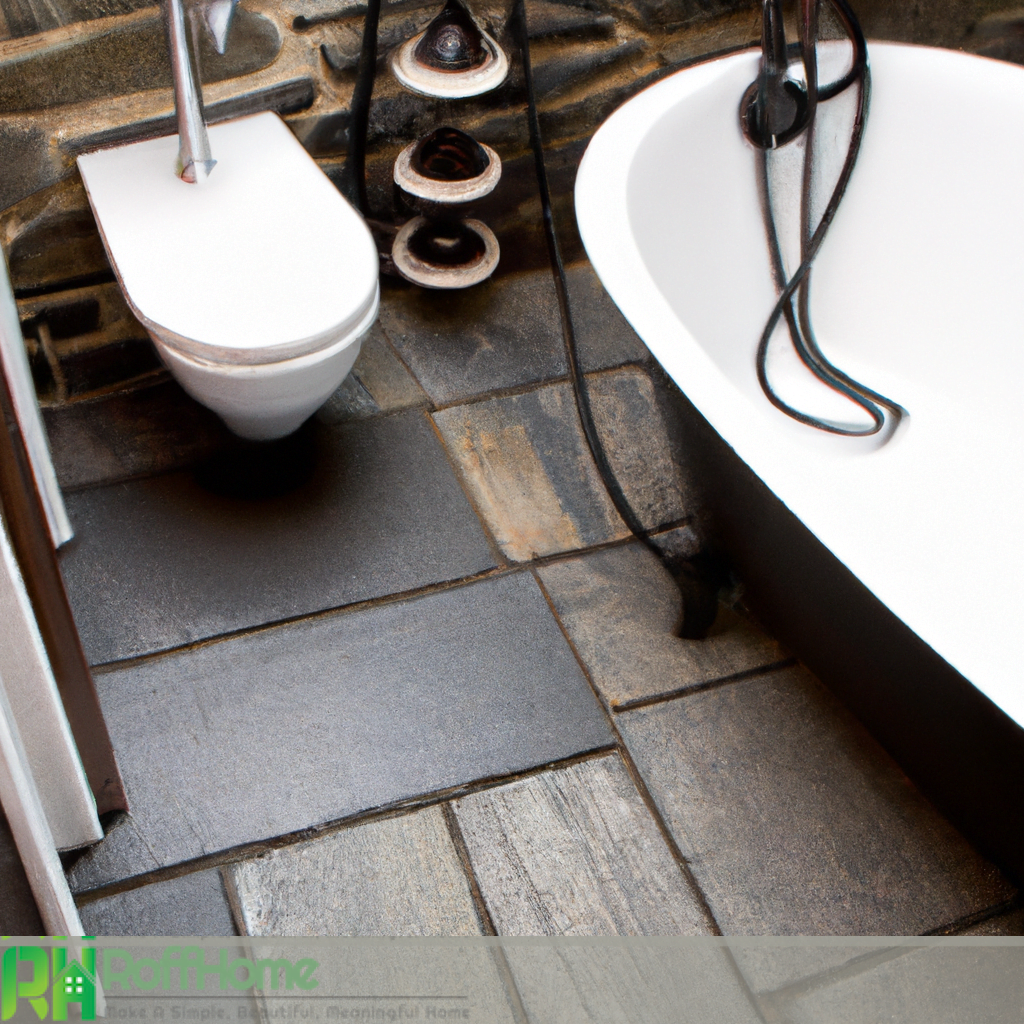
Design Ideas for Incorporating a Slate Floor into Bathroom Décor
Incorporating a slate floor into bathroom décor can add a touch of natural elegance and create a visually stunning space. Whether aiming for a rustic, contemporary, or spa-like atmosphere, numerous design ideas can help you make the most of your slate flooring. In this article, we will explore some inspiring ways to incorporate a slate floor into your bathroom décor, allowing you to create a unique and captivating space.
Embrace Contrast: Pairing a slate floor with light-colored walls or fixtures creates a striking contrast that draws attention to the natural beauty of the stone. The interplay between dark slate and lighter elements adds depth and visual interest to the bathroom.
Create a Spa-Like Oasis: Use slate flooring as a foundation for a spa-inspired bathroom. Combine the slate floor with calming colors like soft blues or earthy greens, and incorporate natural materials like wood or bamboo for a soothing and rejuvenating ambiance.
Mix and Match Textures: Combine the rough, textured surface of slate with sleek and smooth materials to create a visually interesting contrast. For example, pair slate flooring with a polished concrete countertop or glossy porcelain fixtures for a modern and eclectic look.
Play with Patterns: Slate flooring comes in various patterns, such as herringbone, basketweave, or random mosaic. Experiment with different laying patterns to add visual intrigue and create a unique focal point in the bathroom.
Accentuate with Lighting: Proper lighting can enhance the beauty of slate flooring. Use strategically placed light fixtures, such as recessed lighting or wall sconces, to highlight the texture and colors of the slate floor, creating a warm and inviting atmosphere.
Add Natural Elements: Complement the organic feel of slate by incorporating natural elements into the bathroom décor. Consider using plants, pebble accents, or wooden accessories to create a harmonious and earthy environment.
Consider a Feature Wall: Create a stunning focal point by extending the slate beyond the floor onto a feature wall. This can be achieved using slate tiles or cladding the wall with slate for a dramatic and cohesive look.
Opt for Minimalist Elegance: Embrace a minimalist approach by keeping the bathroom décor clean and simple. Pair a slate floor with neutral colors, streamlined fixtures, and minimalistic accessories to create an atmosphere of refined elegance.
How to Choose the Right Type of Slate for Bathroom Floor
Choosing the correct type of slate for your bathroom floor is crucial to ensure both aesthetic appeal and long-lasting durability. With its natural beauty and versatility, slate offers various options for design preferences and functional requirements. This article will explore essential factors to consider when selecting the correct type of slate for your bathroom floor.
Water Resistance: Since the bathroom is a high-moisture environment, it is essential to choose a highly water-resistant slate. Look for slates with a low absorption rate to prevent water damage and ensure longevity of your flooring.
Durability: Bathrooms are often high-traffic, so selecting a durable slate is essential. Opt for slates with a high hardness rating to withstand wear and tear of the daily use. Additionally, consider the thickness of the slate tiles to ensure they can withstand the weight and impact over time.
Slip Resistance: Safety is paramount in a bathroom, so choosing a slate floor with slip-resistant properties is crucial. Look for slates with a textured surface or a higher coefficient of friction to minimize risk of slipping, especially when floor is wet.
Color and Texture: Slate comes in various colors, from earthy tones like gray, green, and brown to more vibrant hues. Consider your bathroom’s overall color scheme and style when selecting the slate color. Additionally, think about the texture of the slate, as it can vary from smooth to cleft (rough texture). The texture can influence both the aesthetic appeal and the maintenance requirements of the slate floor.
Maintenance: Evaluate the maintenance needs of different slate types before deciding. Some slates may require more regular sealing or unique cleaning products to maintain appearance. Consider your willingness and ability to invest time and effort into the upkeep of the slate floor.
Budget: Set a budget for your bathroom flooring project and choose a slate type that fits within your financial constraints. Remember to consider the costs of installation, as well as any additional materials required.
Personal Preference: Ultimately, choose a slate that resonates with your style and complements the overall design aesthetic of your bathroom. Consider the look, feel, and ambiance you want to achieve.
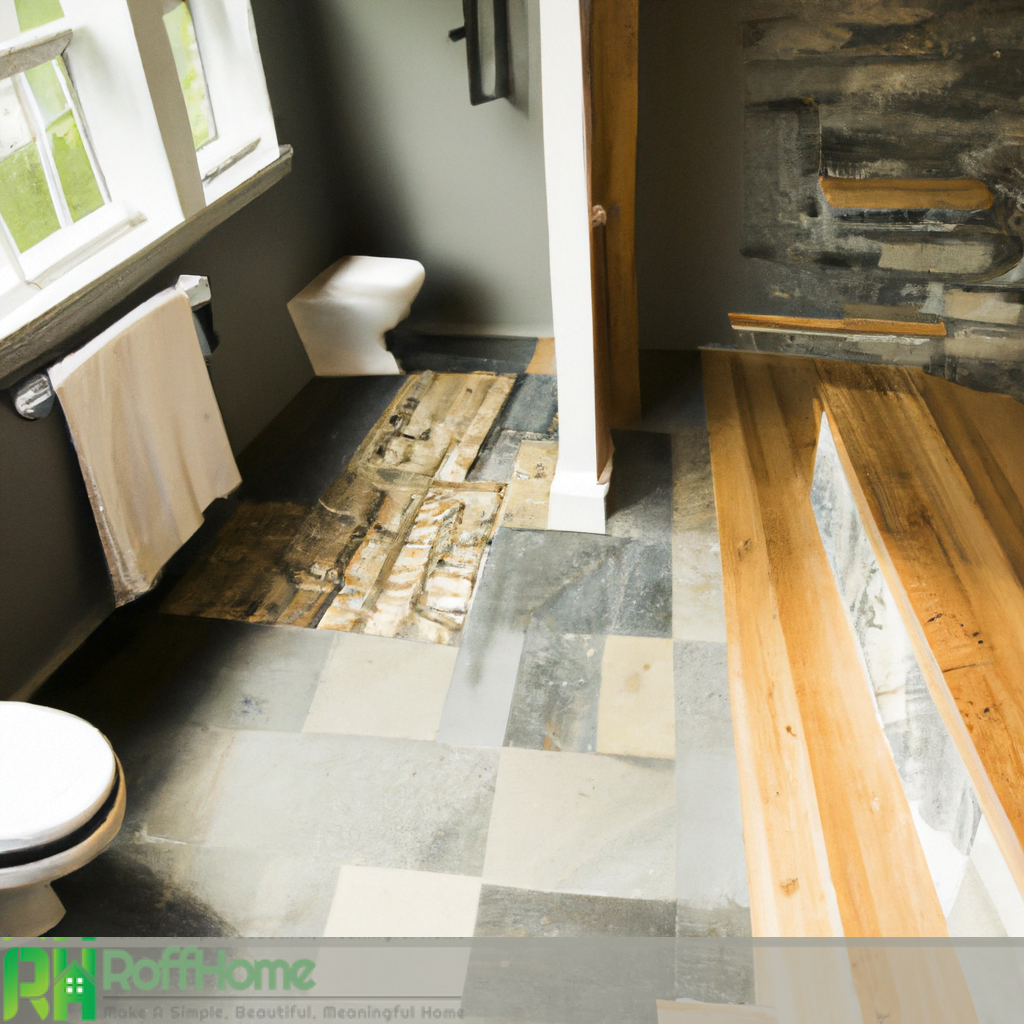
Creating a Spa-like Retreat with Slate Flooring in Bathroom
Transforming your bathroom into a spa-like retreat can be a rejuvenating and relaxing experience. One element that can contribute significantly to this ambiance is the flooring choice. With its natural beauty and soothing qualities, slate flooring provides an excellent foundation for creating a serene and luxurious spa-like atmosphere. This article will explore various design ideas and elements to consider when using slate flooring to create a spa-like retreat in your bathroom.
Natural Color Palette: Opt for a soft and natural color palette to create a calming environment. Earthy tones such as beige, gray, or muted greens complement the natural aesthetics of slate flooring and evoke a sense of tranquility.
Warm Lighting: Incorporate warm lighting fixtures like dimmable recessed or soft pendant lights to create a cozy and inviting atmosphere. The gentle illumination enhances the natural textures and colors of the slate, fostering a serene and spa-like ambiance.
Textured Accents: Introduce textured accents, such as pebble tiles or mosaic patterns, to add depth and visual interest to the bathroom. These textured elements, combined with the organic texture of slate flooring, create a sensory experience reminiscent of a spa environment.
Natural Materials: Complement the slate flooring with other the natural materials, such as wood, bamboo, or stone. Incorporate these materials in vanity countertops, shelves, or accents to enhance the overall organic feel of the space.
Freestanding Tub or Rainfall Shower: Install a freestanding tub or a rainfall shower to elevate the spa-like experience. These fixtures add a luxurious touch and provide a sense of relaxation and indulgence, turning your bathroom into a personal oasis.
Greenery: Introduce live plants or fresh flowers to bring nature indoors. They add a touch of freshness and beauty and also purify the air and contribute to a serene environment.
Relaxing Scents: Enhance the spa-like atmosphere with soothing scents like essential oils or scented candles. Fragrances like lavender, eucalyptus, or chamomile can promote relaxation and create a peaceful ambiance.
Soft Textiles: Incorporate plush towels, bathrobes, and soft rugs to enhance the comfort and luxury of the space. Choose luxurious fabrics against the skin and add warmth and coziness to the overall design.
The Cost Considerations of Installing a Slate Floor Bathroom
Installing a slate floor in the bathroom can elevate its aesthetic appeal and add a touch of natural elegance. However, before embarking on a slate flooring project, it’s essential to consider the cost implications. Several factors influence the overall cost of installing a slate floor in the bathroom. This article will explore the critical cost considerations to help you make an informed decision.
Material Cost: The cost of slate flooring can vary depending on factors such as quality, thickness, and color of the tiles. Higher-quality and larger-sized slates generally come at a higher price. It’s advisable to visit local suppliers or check online retailers to understand the current market prices for slate tiles.
Installation Cost: Hiring a professional to install your slate floor is recommended for optimal results. The installation cost can vary based on project’s complexity, such as the size of the bathroom, any intricate patterns or designs, and the need for additional preparation work. Labor costs also depend on the region and the experience of the installer.
Subfloor Preparation: The subfloor needs to be adequately prepared before installing slate tiles. This may involve removing the existing flooring, leveling the subfloor, and ensuring it is sturdy and suitable for slate installation. The extent of subfloor preparation required can impact the overall cost.
Additional Materials: In addition to slate tiles, other materials are needed for installation. This includes adhesive, grout, sealant, and underlayment if necessary. These materials contribute to the overall cost and should be factored into the budget.
Maintenance and Longevity: While not directly a cost consideration during installation, it’s essential to consider long-term maintenance. Slate flooring typically requires periodic sealing and routine cleaning to preserve its appearance and durability. Understanding the maintenance requirements can help estimate the ongoing costs of keeping the floor in optimal condition.
Budgetary Allocation: It’s crucial to establish a budget for the entire project, considering the cost of materials, installation, and additional expenses. Allocating a realistic budget will ensure that you can complete the project within your financial means.
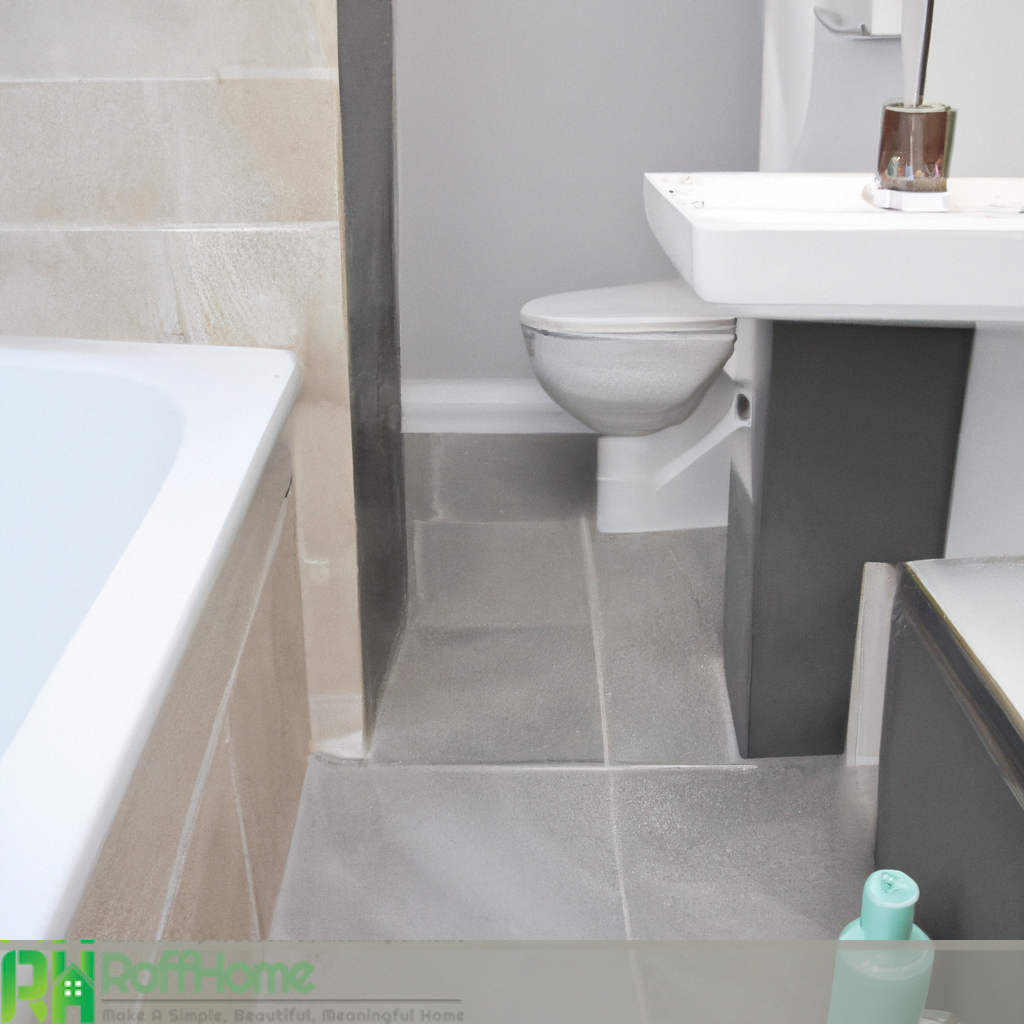
The Advantages of Installing a Slate Floor Bathroom
Installing a slate floor in the bathroom has numerous advantages, making it a popular choice among homeowners. From its natural beauty to its durability and low-maintenance requirements, slate flooring offers several benefits that can enhance the functionality and the aesthetics of the bathroom. This article will explore the advantages of installing a slate floor in the bathroom.
Natural Beauty: One of the primary advantages of slate flooring is its natural beauty. Each slate tile has a unique texture, color variation, and pattern, which adds character and visual interest to the bathroom. The earthy tones and natural variations of slate create a warm and inviting atmosphere.
Durability: Slate is a highly durable material that can withstand rigors of daily use in the bathroom. It is resistant to scratches, cracks, and chips, making it ideal for high-traffic areas. With proper installation and maintenance, a slate floor can last for decades.
Water Resistance: Slate is inherently water-resistant, making it an excellent choice for bathroom flooring. It absorbs minimal water, reducing the risk of damage caused by moisture and humidity. This characteristic makes slate highly suitable for bathrooms, where exposure to water is every day.
Low Maintenance: Slate flooring requires minimal maintenance. Regular sweeping and occasional mopping with a mild detergent is usually sufficient to keep it clean. Additionally, slate is naturally resistant to stains, making it easy to maintain its appearance.
Slip Resistance: Safety is crucial in the bathroom, and slate flooring provides excellent slip resistance. Its textured surface offers traction, reducing the risk of slips and falls, especially when the floor is wet.
Versatility: Slate is available in various colors, sizes, and patterns, allowing creative and versatile design options. Whether you prefer a rustic, contemporary, or classic look, a slate option suits your style and preferences.
Temperature Regulation: Slate has natural thermal properties that can help regulate the temperature in the bathroom. It stays cool in the warm weather and can retain heat in colder temperatures, making it comfortable underfoot throughout the year.
Allergy-Friendly: Slate is a natural material that does not harbor allergens like dust mites, pollen, or pet dander. This makes it an ideal flooring choice for individuals with allergies or respiratory sensitivities.
Maintenance Tips for Keeping Slate Floor in the Bathroom Looking Beautiful
Slate flooring in the bathroom adds a touch of natural elegance and beauty to the space. To ensure that your slate floor retains its charm and durability over time, following proper maintenance practices is essential. By implementing a regular cleaning routine and taking preventive measures, you can keep your slate floor looking beautiful for years to come. In this article, we will provide maintenance tips tailored explicitly for slate floors in the bathroom.
Sweep or Vacuum Regularly: Start by removing loose dirt and debris from the surface of the slate floor. The soft-bristle broom or a vacuum cleaner with a brush attachment prevents scratching the tiles. Regular sweeping or vacuuming helps prevent dirt from scratching the surface and keeps the floor looking clean.
Mop with Neutral pH Cleaner:
- Use a mild, pH-neutral cleaner specifically formulated for slate floors.
- Dilute the cleaner as per the instructions and mop the floor gently.
- Rinse thoroughly with clean water to the remove any residue.
Wipe up Spills Promptly: To prevent stains, accidental spills in the bathroom should be wiped up immediately. Slate is naturally stain-resistant, but prolonged exposure to certain substances like harsh chemicals or colored liquids may cause discoloration if not cleaned promptly.
Avoid Harsh Cleaning Tools: Avoid using abrasive cleaning tools, such as steel wool or scrub brushes with stiff bristles, as they can scratch or damage the surface of the slate. Instead, opt for soft mops, microfiber cloths, or gentle scrub brushes with soft bristles.
Seal the Slate: Depending on the type of slate and its porosity level, it may benefit from periodic sealing. Sealing helps protect the slate from stains and water penetration. Follow the manufacturer’s instructions for the appropriate sealer and application method.
Preventive Measures: Place mats or rugs near the bathroom entrance in high-traffic areas to catch dirt and moisture. This helps minimize the dirt and water that comes into contact with the slate floor. Additionally, consider using felt or rubber pads on furniture legs to prevent scratches.
Regular Inspection: Periodically inspect the slate floor for any signs of damage, such as cracks or loose tiles. Promptly address any issues by consulting a professional to ensure timely repairs and prevent further damage.
Avoid Excessive Water: While slate is water-resistant, excessive moisture can harm the floor. Avoid using excessive water when mopping and wipe up standing water promptly to prevent water damage.
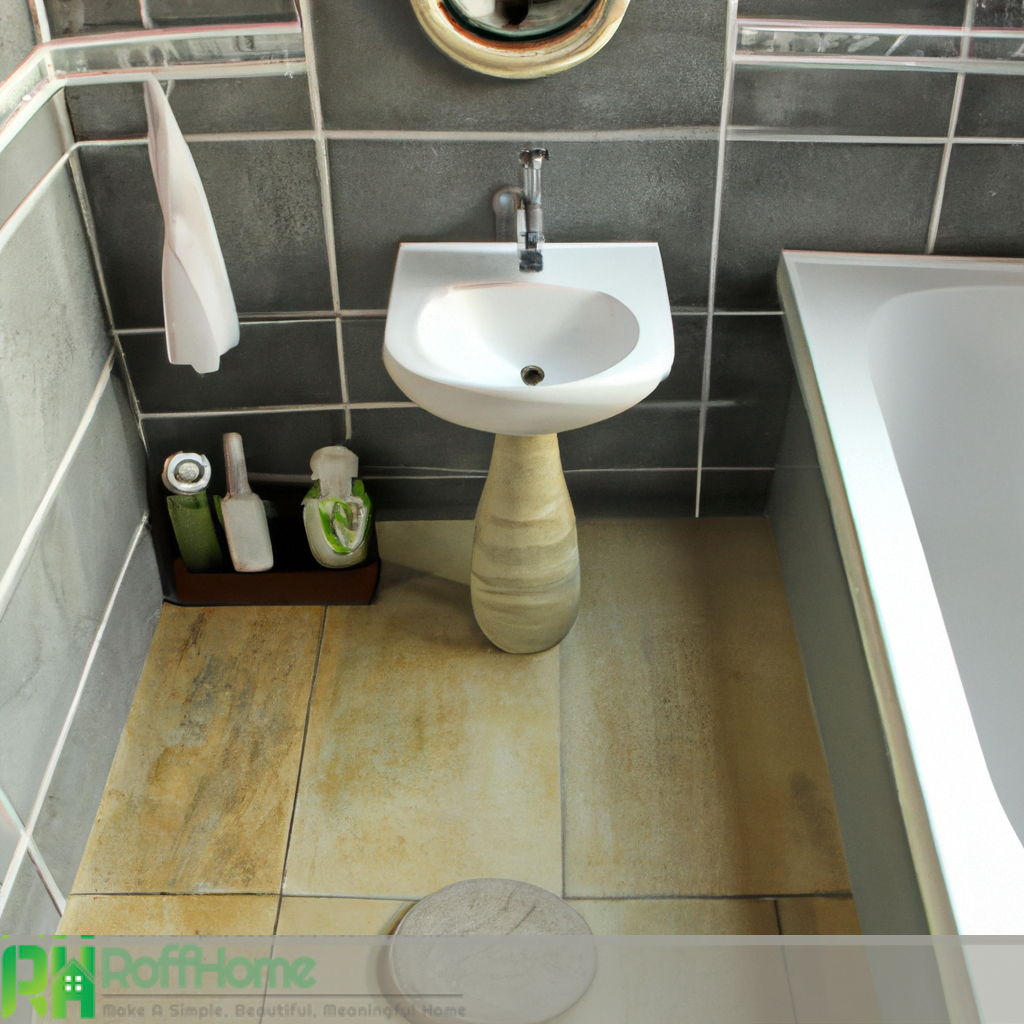
Pros and Cons of Using Slate Flooring in Bathroom Design
When considering flooring options for bathroom design, slate flooring emerges as a popular choice due to its natural beauty and durability. However, it’s essential to weigh the pros and cons before deciding.
Pros:
Aesthetic Appeal: Slate flooring adds a touch of natural elegance and sophistication to the bathroom. With its unique texture, color variations, and earthy tones, slate can enhance the overall design aesthetic and create a visually stunning space.
Durability: Slate is known for its exceptional durability and longevity. It can withstand heavy foot traffic, impacts, and daily use in the bathroom without easily scratching or chipping. When properly maintained, a slate floor can last for many years.
Water Resistance: Slate is highly water-resistant, making it suitable for bathroom applications. It absorbs minimal water and is less prone to warping or damage caused by moisture. This characteristic makes it a practical choice for wet areas like bathrooms.
Slip Resistance: Slate flooring typically has a textured surface, providing good traction and slip resistance. This is particularly important in the bathroom, where water spills and high humidity can increase the risk of accidents. The slip resistance of slate helps maintain a safe environment.
Low Maintenance: Slate flooring is relatively low maintenance. Regular sweeping, occasional mopping with a mild detergent, and periodic sealing (depending on the type of slate) are usually sufficient to keep the floor clean and well-maintained.
Cons:
Cost: One of the main drawbacks of using slate flooring is its cost. Compared to other flooring options, slate can be more expensive in terms of material and installation. However, its durability and longevity can offset this initial investment in the long run.
Cold Surface: Slate tends to feel cold underfoot, which may not be comfortable, especially in colder climates or during winter. However, using radiant heating systems or incorporating rugs or mats can mitigate this issue.
Requires Proper Installation: Proper slate flooring installation ensures its performance and longevity. Improper installation can lead to uneven surfaces, cracks, or loose tiles. It’s essential to hire an experienced professional to handle the installation process.
Susceptible to Stains and Acids: While slate is naturally stain-resistant, certain acidic substances or harsh chemicals can cause discoloration or damage to surface. Promptly cleaning up spills and using gentle, pH-neutral cleaners is essential to maintain the slate’s appearance.
Limited Color Options: Slate flooring is primarily available in earthy tones, which may not suit every design preference. Other flooring materials offer more variety if you desire a more comprehensive range of color options.
In conclusion, a slate floor in the bathroom offers a combination of natural beauty, durability, and water resistance. While it may the require a higher initial investment and proper maintenance, the unique aesthetic appeal and long-lasting nature of slate make it a practical choice for bathroom flooring.

